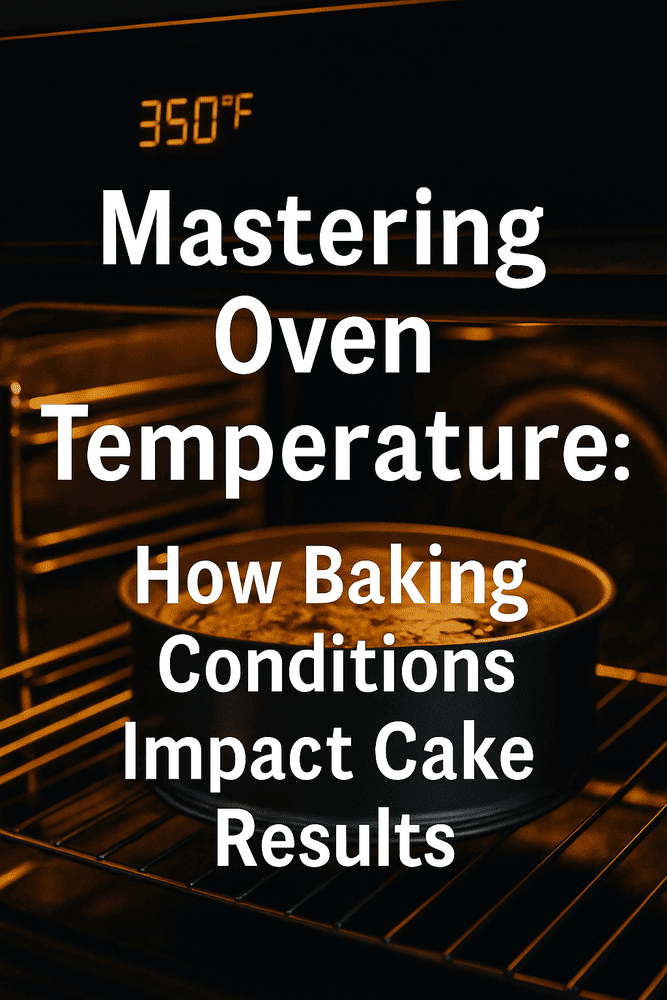You’ve measured every ingredient perfectly, mixed with care, and poured your batter into the pan with high hopes—only to find the cake dry on the edges, raw in the center, or sunken in the middle. The culprit? Often, it’s the oven. Baking isn’t just about what goes into the cake; it’s also about how the cake bakes. The temperature and behavior of your oven play a critical role in how your final product turns out.
Let’s begin with why oven temperature matters. Cakes are delicate emulsions of fat, sugar, liquid, and flour. They rely on precise chemical reactions—like leavening agents producing gas and proteins setting at the right time—to rise and set properly. If your oven is too hot or too cool, it throws off the entire process.
A too-hot oven may cause the cake to rise quickly and then collapse, leaving a sunken center and possibly overcooked edges. A too-cool oven can lead to dense, pale cakes that never fully rise or brown. That’s why even and correct heat is essential.
Most cake recipes call for baking at 325°F to 350°F (160°C to 180°C). This range is ideal for giving the batter time to rise slowly and evenly while the structure sets. Lower temperatures work better for dense cakes like cheesecakes or pound cakes, while lighter cakes benefit from a slightly higher temperature.
But here’s the tricky part: ovens aren’t always accurate. Many home ovens can be off by 10–25 degrees or more. That’s why it’s crucial to use an oven thermometer to verify the internal temperature. Place it in the center of the oven (not on the door or too close to heating elements) and allow your oven to preheat completely.
Now, let’s talk about oven types. There are several kinds, and each affects baking differently:
- Conventional ovens: Heat comes from the bottom (and sometimes top) elements. They may have hot spots and uneven heat distribution.
- Convection ovens: Use a fan to circulate hot air, promoting faster and more even baking. You usually need to lower the temperature by 25°F (about 15°C) when using convection mode.
- Gas ovens: Can create moist environments and uneven heat due to open flames and airflow issues.
- Electric ovens: Offer steady heat but may still have temperature fluctuations or hot zones.
If your cakes come out unevenly baked, rotate the pan halfway through baking to encourage even browning. Avoid opening the oven door in the first 20 minutes—this can drop the temperature suddenly and affect the cake’s rise.
Pan placement also matters. Cakes should be baked on the center rack, where heat circulates most evenly. Placing the pan too high may brown the top too quickly; too low and the bottom may burn.
Here are some common oven-related problems and what they mean:
- Cake peaked in the middle: Oven too hot or pan placed too high. The edges set quickly, pushing the center upward.
- Cake collapsed: Oven too cool, underbaking, or opening the door too early.
- Dry cake: Overbaking or incorrect pan size, causing thin layers to cook too fast.
- Soggy center: Not baked long enough or oven not hot enough to cook through.
Every oven is unique, so keep a baking journal. Note times, temperatures, and outcomes. Over time, you’ll learn how your oven behaves and how to adjust accordingly.
Another important factor is preheating. Never skip it. Cakes rely on initial heat to activate leavening and set structure. An unpreheated oven can delay rising or cause uneven texture.
Also, consider the material of your baking pans. Dark pans absorb more heat and can brown cakes faster—lower your baking temperature slightly. Glass or ceramic pans retain heat longer and may require reduced temperatures or shorter baking times.
Use these practical tips to improve your results:
- Invest in an oven thermometer for accurate temperature
- Always preheat fully before baking
- Bake on the middle rack
- Avoid opening the oven door early
- Adjust baking time if using convection
- Choose the right pan size to match the batter volume
Let’s say your recipe suggests 35 minutes at 350°F, but your oven tends to run hot. Try baking at 340°F and start checking for doneness around 30 minutes. Use a toothpick test—it should come out clean or with a few moist crumbs, not wet batter.
Another essential strategy is understanding residual heat. Cakes continue to cook after being removed from the oven due to carryover heat. That’s why it’s important to remove them promptly once done and cool on a wire rack.
If your cakes often underperform, don’t assume it’s the recipe. Sometimes, your oven just needs calibration—or a better understanding. Call your appliance technician if the discrepancy is large, or look for your oven’s calibration settings.
Finally, remember: baking is science, but it’s also a rhythm. Learning how your oven responds to time, temperature, and different recipes will elevate your skills. A well-calibrated oven with even heat can make even simple recipes shine.
In our next article (#11), we’ll shift gears from science to creativity: “How to Decorate Cakes Like a Pro (Even If You’re a Beginner)”. You’ve built the perfect cake—now let’s make it beautiful!
